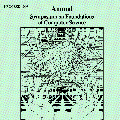Cryptography with quantum states exhibits a number of surprising and counterintuitive features. In a 2002 work, Barnum et al. argue that these features imply that digital signatures for quantum states are impossible (Barnum et al., FOCS 2002). In this work, we ask: can all forms of signing quantum data, even in a possibly weak sense, be completely ruled out? We give two results which shed significant light on this basic question. First, we prove an impossibility result for digital signatures for quantum data, which extends the result of Barnum et al. Specifically, we show that no nontrivial combination of correctness and security requirements can be fulfilled, beyond what is achievable simply by measuring the quantum message and then signing the outcome. In other words, only classical signature schemes exist. We then show a positive result: a quantum state can be signed with the same security guarantees as classically, provided that it is also encrypted with the public key of the intended recipient. Following classical nomenclature, we call this notion quantum signcryption. Classically, signcryption is only interesting if it provides superior performance to encypt-then-sign. Quantumly, it is far more interesting: it is the only signing method available. We develop "as-strong-as-classical" security definitions for quantum signcryption and give secure constructions based on post-quantum public-key primitives. Along the way, we show that a natural hybrid method of combining classical and quantum schemes can be used to "upgrade" a secure classical scheme to the fully-quantum setting, in a wide range of cryptographic settings including signcryption, authenticated encryption, and CCA security.
翻译:具有量子状态的加密具有一些惊人和反直觉特征。 在2002年的一项工作中, Barnum 等人认为,这些特征意味着量子状态的数字签名是不可能的(Barnum 等人, FOSC 2002 ) 。 在这项工作中,我们问: 是否能够完全排除所有形式的签署量子数据的签名, 即使是在可能微弱的意义上, 也可以完全排除? 我们给出了两个结果, 使这个基本问题有了显著的解析。 首先, 我们证明量子数据的数字签名不可能产生一个结果, 扩展了Barnum 等人的结果。 具体地说, 我们证明, 任何正确和安全要求的非边际组合都无法实现, 不仅仅是通过测量量子信息, 然后签署结果所能实现的。 换句话说, 只有经典的签名计划存在。 然后我们展示了一个积极的结果: 量子状态可以与传统意义上的安全保障协议一样, 但它也与预期的公用钥匙加密。 在古典术语之后, 我们称之为量信号信号信号信号信号加密。 典型, 只有当它能提供更高级的精确的直径直径规则,, 我们使用直径的精确的精确的计算方法, 才能显示一个可以完全地进行。



